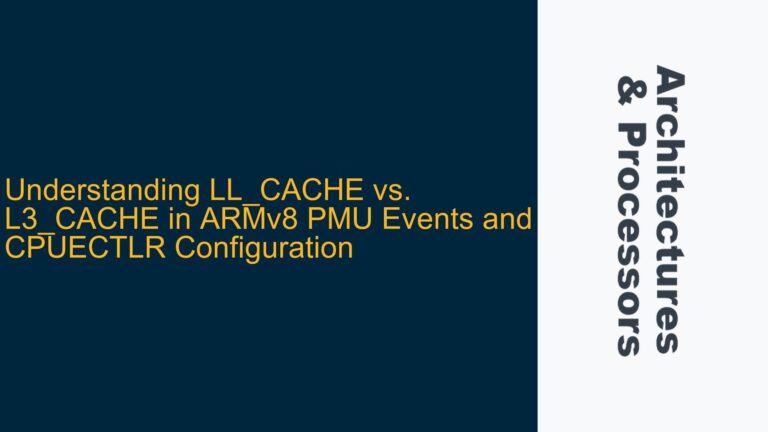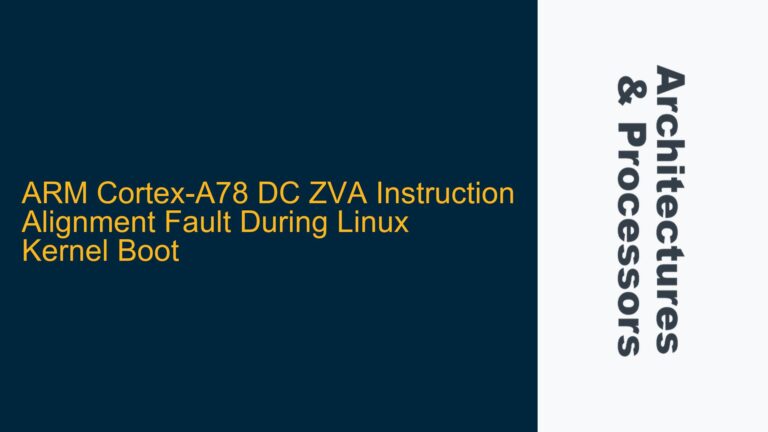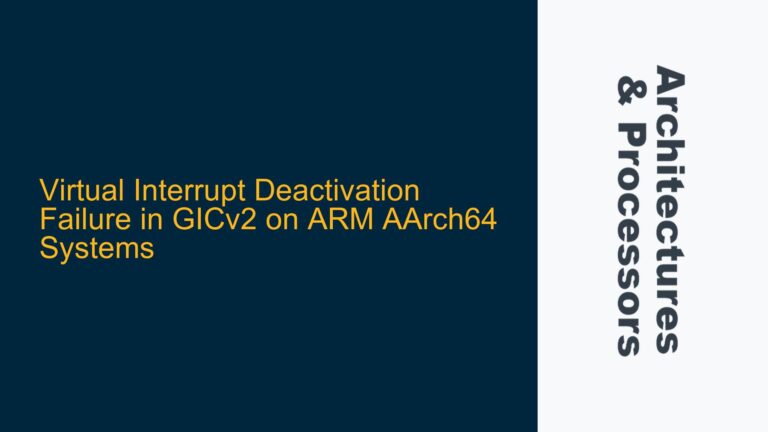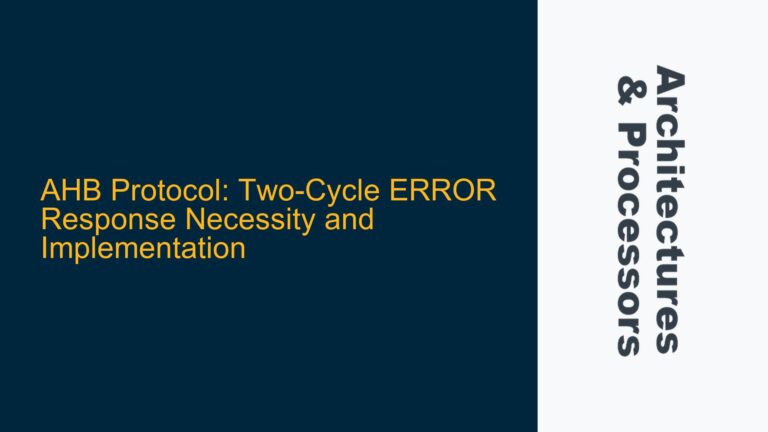ARM CHI ReadClean Transaction Cache State Discrepancy Between Tables 4-5 and 4-33
The ARM Coherent Hub Interface (CHI) specification defines the behavior of cache states and transactions in a coherent system. A critical discrepancy exists between Table 4-5 and Table 4-33 regarding the permissible cache states for a ReadClean transaction. Table 4-5 suggests that only the UC (Uncached Clean) and SC (Shared Clean) states are valid for a ReadClean request. However, Table 4-33 indicates that the final cache state of a ReadClean transaction can also be UD (Unique Dirty) or SD (Shared Dirty) if the initial state is UD, SD, or UDP (Unique Dirty Partial). This inconsistency raises questions about the correct interpretation of the CHI specification and its implications for cache coherency protocols.
The discrepancy stems from the evolution of the CHI specification, particularly with the introduction of Memory Tagging Extension (MTE). Historically, ReadClean transactions were only permitted from Invalid or UCE (Uncached Exclusive) states, limiting the final cache states to UC or SC. However, with MTE, ReadClean transactions can now be issued from additional states, such as UD or SD, when the TagOp field is set to Transfer. This change allows the Requester Node (RN) to transfer valid data with invalid tags, enabling more flexible cache management.
The confusion arises because Table 4-5 was not updated to reflect this change, while Table 4-33 was updated to include the new behavior. This oversight in the CHI specification can lead to misinterpretation and implementation errors, particularly in systems leveraging MTE. Understanding the correct behavior is crucial for ensuring proper cache coherency and system performance.
Memory Tagging Extension (MTE) Impact on ReadClean Transactions and Cache States
The introduction of Memory Tagging Extension (MTE) in ARM architectures has significantly impacted the behavior of ReadClean transactions and cache states. MTE allows for enhanced memory safety by associating metadata tags with memory locations. These tags are used to detect memory corruption and enforce access policies. In the context of the CHI protocol, MTE introduces the concept of transferring valid data with invalid tags, which was not previously supported.
When a ReadClean transaction is issued with the TagOp field set to Transfer, the Requester Node (RN) can have valid data in its cache but invalid tags. This scenario is particularly relevant when the initial cache state is UD or SD. In such cases, the final cache state after a ReadClean transaction can be UD or SD, as the data remains valid, but the tags are updated to reflect the new state. This behavior is now correctly documented in Table 4-33 but is missing from Table 4-5, leading to the observed discrepancy.
The ability to issue ReadClean transactions from UD or SD states with TagOp = Transfer is a powerful feature that enhances system flexibility. It allows for more efficient cache management, particularly in systems with complex memory hierarchies and multiple caching agents. However, this flexibility also introduces additional complexity in the design and verification of cache coherency protocols, as it requires careful handling of tag states and data validity.
Resolving the Discrepancy: Correct Interpretation and Implementation of ReadClean Transactions
To resolve the discrepancy between Table 4-5 and Table 4-33, it is essential to understand the correct interpretation of the CHI specification in the context of MTE. The key is to recognize that Table 4-5 reflects the historical behavior of ReadClean transactions, while Table 4-33 has been updated to include the new behavior introduced by MTE. Therefore, the correct interpretation is that ReadClean transactions can result in UD or SD final cache states when issued from UD, SD, or UDP initial states with TagOp = Transfer.
For designers and verification engineers, this means that the cache coherency protocol must be implemented to handle both the traditional and MTE-enabled behaviors of ReadClean transactions. This involves ensuring that the cache state transitions are correctly modeled and verified, particularly in scenarios involving tag transfers. The following steps outline the correct approach to implementing and verifying ReadClean transactions in the context of MTE:
-
Cache State Transition Modeling: Update the cache state transition logic to account for the new behavior introduced by MTE. Specifically, ensure that the final cache state can be UD or SD when the initial state is UD, SD, or UDP and the TagOp field is set to Transfer.
-
Verification of TagOp Scenarios: Develop comprehensive test cases to verify the behavior of ReadClean transactions with TagOp = Transfer. These test cases should cover all possible initial cache states and ensure that the final cache state is correctly updated.
-
Synthesis Constraints and Timing Analysis: Ensure that the synthesis constraints and timing analysis account for the additional complexity introduced by MTE. This includes verifying that the cache state transitions meet timing requirements and do not introduce bottlenecks in the system.
-
Debugging Cross-Domain Synchronization: Pay special attention to cross-domain synchronization issues that may arise due to the new behavior of ReadClean transactions. This includes verifying that data and tag states are correctly synchronized across different caching agents.
-
Documentation and Compliance: Update the design and verification documentation to reflect the correct interpretation of the CHI specification. Ensure that the implementation complies with the updated behavior and that any discrepancies are clearly documented and addressed.
By following these steps, designers and verification engineers can ensure that their implementations of the CHI protocol are correct and robust, even in the presence of the complexities introduced by MTE. This approach not only resolves the discrepancy between Table 4-5 and Table 4-33 but also enhances the overall reliability and performance of the system.
Conclusion
The discrepancy between Table 4-5 and Table 4-33 in the ARM CHI specification highlights the importance of understanding the evolution of cache coherency protocols, particularly with the introduction of new features like Memory Tagging Extension (MTE). By recognizing the impact of MTE on ReadClean transactions and cache states, designers and verification engineers can correctly interpret the CHI specification and implement robust cache coherency protocols. This ensures that the system operates efficiently and reliably, even in the presence of complex memory hierarchies and multiple caching agents.






